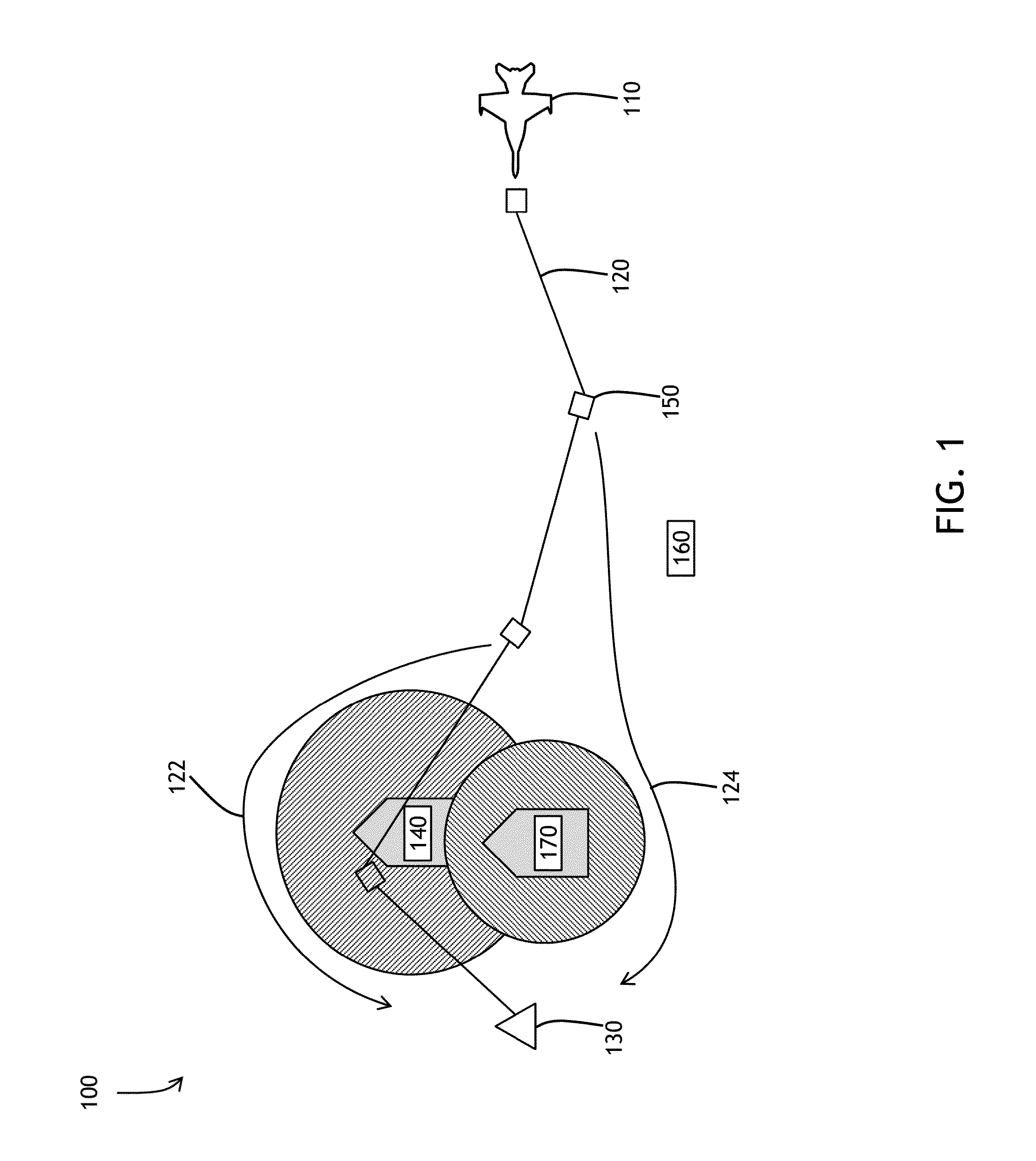Risk-aware contingency flight re-planner system and related method
a flight re-planner and risk-aware technology, applied in the field of aircraft re-routing, can solve the problems of posing a certain level of risk to aircrew and passengers, and affecting the accuracy of pre-mission decisions
- Summary
- Abstract
- Description
- Claims
- Application Information
AI Technical Summary
Benefits of technology
Problems solved by technology
Method used
Image
Examples
Embodiment Construction
[0031]Reference will now be made in detail to the presently preferred embodiments of the invention, examples of which are illustrated in the accompanying drawings.
[0032]The following description presents certain specific embodiments of the present invention. However, the present invention may be embodied in a multitude of different ways as defined and covered by the claims. In this description, reference is made to the drawings wherein like parts are designated with like numerals throughout.
[0033]The present invention operates in concert with a real-time auto router named Airborne E* (pronounced as E Star) that maintains the in-flight, long-range 4-D trajectory re-planning capability and was designed to meet desired automated routing requirements. Airborne E* is described in 1) U.S. Pat. No. 8,234,068B1 ('068 Patent), issued Jul. 31, 2012, filed: Jan. 15, 2009, entitled “System, Module, and Method of Constructing a Flight Path Used by an Avionics System,” to Young, et. al. and 2) U....
PUM
 Login to View More
Login to View More Abstract
Description
Claims
Application Information
 Login to View More
Login to View More - R&D
- Intellectual Property
- Life Sciences
- Materials
- Tech Scout
- Unparalleled Data Quality
- Higher Quality Content
- 60% Fewer Hallucinations
Browse by: Latest US Patents, China's latest patents, Technical Efficacy Thesaurus, Application Domain, Technology Topic, Popular Technical Reports.
© 2025 PatSnap. All rights reserved.Legal|Privacy policy|Modern Slavery Act Transparency Statement|Sitemap|About US| Contact US: help@patsnap.com



